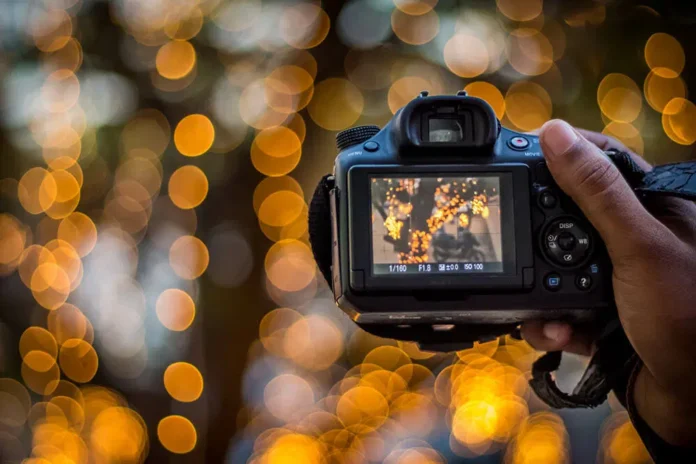If you’ve ever seen a photograph where the background is beautifully blurred, drawing attention to the subject in the foreground, you’ve witnessed the magic of Photeeq bokeh. In this article, we will dive deep into the world of bokeh, explaining what it is, how it works, and how you can create this stunning effect in your own photos. Whether you’re a beginner or a seasoned photographer, you’ll find tips, techniques, and insights to help you master the art of bokeh.
What Is Bokeh Effect?
The term bokeh refers to the quality of the blur in the out-of-focus areas of a photograph. It’s not just about making the background blurry; it’s about the way light and shapes appear when blurred. Let’s break down the key elements of bokeh:
Out-of-Focus Blur
At its core, bokeh is the aesthetic quality of the blurred areas in your image. The blur occurs because the lens isn’t focusing on certain parts of the image. The result? Soft, dreamy backgrounds that make the subject stand out sharply.
Background Blur
This is the most common form of bokeh that photographers strive for. By adjusting the depth of field, you can create a blur effect in the background while keeping the main subject in focus. This makes portraits, nature photography, or close-up shots much more compelling.
Soft Lights
Bokeh is especially noticeable when there are small light sources in the background, like streetlights or fairy lights. These lights turn into beautiful, circular or hexagonal shapes, creating a soft and dreamy ambiance in your photos.
Bokeh in History
Bokeh has been a crucial element in photography for a long time. While the term itself became popular in the late 20th century, photographers have been experimenting with out-of-focus effects for decades. Early photographers didn’t always have the advanced lenses we have today, so achieving beautiful bokeh required careful manual settings and sometimes even custom-made filters. Over time, as camera equipment evolved, photographers were able to manipulate bokeh more creatively, making it a key element in portrait photography, wedding photography, and even product shots.
Pleasing Bokeh vs. Bad Bokeh
When it comes to bokeh, there is a noticeable difference between pleasing bokeh and bad bokeh. So, how can you tell the difference?
Pleasing Bokeh
Pleasing bokeh looks smooth and creamy, where the out-of-focus lights appear as soft, round shapes. The blur should be uniform, with no harsh edges or distractions. Pleasing bokeh helps to isolate the subject and bring more focus to it.
Bad Bokeh
Bad bokeh is often described as harsh or distracting. If the blur creates jagged, irregular shapes or looks unnatural, it can take away from the beauty of the image. For instance, light sources that turn into strange, distorted shapes instead of soft circles can create an unpleasant effect.
Light Shapes and Good Bokeh
A crucial factor in creating beautiful bokeh is the light sources in your background. When photographing with bokeh, points of light (like Christmas lights, streetlights, or candles) can create distinctive shapes in the blur.
Good bokeh shapes tend to be round or hexagonal, depending on the aperture of your lens. A lens with more aperture blades generally creates rounder shapes. Experimenting with light sources in your background is an excellent way to improve your bokeh game.
Tools Needed to Create Bokeh
Creating beautiful bokeh doesn’t require a fancy camera setup. However, certain tools and settings will help you achieve the best results. Let’s go over what you need:
Do You Need a Fast Lens?
Yes, a fast lens (one with a large aperture like f/1.4 or f/2.8) is key to achieving smooth bokeh. The larger the aperture, the shallower the depth of field, making it easier to blur the background. A wide aperture also allows more light into the lens, making the bokeh effect more pronounced.
Best Camera Lens and Other Settings for Bokeh
To capture stunning bokeh, choosing the right lens and settings is essential. Here’s how to get started:
Aperture Priority, Aperture Blades, and Shutter Speed
- Aperture Priority Mode: This mode allows you to control the aperture while the camera adjusts other settings like shutter speed. A wider aperture (like f/1.8) will give you a shallower depth of field and enhance the bokeh.
- Aperture Blades: The shape of the aperture blades can affect the quality of the bokeh. A lens with rounded aperture blades creates smoother, more aesthetically pleasing bokeh compared to lenses with straight-edged blades.
- Shutter Speed: While the shutter speed doesn’t directly affect the bokeh, it can impact how much light enters the lens, which in turn can enhance the bokeh effect. A slower shutter speed can help you capture more light, making bokeh more prominent.
Special Digital Adjustments
If you don’t have the right lens or camera, don’t worry. There are ways to enhance bokeh in post-processing.
Photo Editing Programs
Programs like Adobe Lightroom and Photoshop offer tools to blur the background and enhance the bokeh effect digitally. You can apply selective blur to areas of the image to mimic the look of bokeh, adjusting its intensity and size. While this doesn’t perfectly replicate the real thing, it can still help you achieve the desired look.
Best Background and Setup for Bokeh
The background is just as important as the lens when creating beautiful bokeh. A good background can make your bokeh stand out, while a poor one can create distractions.
Dark or Multicolor Backgrounds
A dark background with scattered light sources works wonders for bokeh. Alternatively, a multicolor background can add an artistic flair to your photos. Experiment with different light settings to see how they affect the bokeh shapes.
Moving Objects and Water
Adding moving objects like water droplets, traffic lights, or swirling leaves can create dynamic bokeh effects. These moving subjects introduce random light patterns, making the bokeh more interesting.
When to Choose Bokeh Effects
Bokeh isn’t just about adding blur to an image; it’s about creating mood and focus. Here are a few examples of when you might want to use bokeh:
More Examples of Bokeh
- Portraits: Bokeh helps to emphasize the subject’s face, separating them from the background.
- Nature Photography: Blurring the background in flower or wildlife shots can bring the subject into sharper focus.
- Night Photography: Bokeh shines when shooting in low light conditions, turning street lights or cityscapes into beautiful orbs.
Best Events for Bokeh
Bokeh is especially popular in certain types of photography, particularly at events:
- Weddings: The soft blur of bokeh in wedding photos adds a dreamy, romantic quality.
- Parties and Celebrations: Whether it’s a birthday, New Year’s Eve, or any other gathering, bokeh can elevate the mood and highlight the atmosphere.
- Outdoor Events: Photography at outdoor events, such as concerts or festivals, benefits greatly from bokeh when capturing the energy and excitement.
Moods With Bokeh
Bokeh has the power to influence the mood of your photos. Soft, smooth bokeh can create a calm, serene feeling, while busy or vibrant bokeh can evoke excitement and energy. By adjusting the background lights and your lens, you can tailor the mood of your photos to match the story you want to tell.
Conclusion
In this article, we’ve explored the enchanting world of bokeh—from understanding its basics to learning how to create it using the right tools, settings, and techniques. Whether you’re photographing a romantic wedding or a lively concert, bokeh can bring your photos to life. So go ahead, experiment with your camera, and see how this beautiful effect can transform your photography.
Remember, achieving perfect bokeh takes practice, but with the right lens and knowledge, you’ll be able to create stunning shots that capture the beauty of light in a way that’s truly your own. Happy photographing!

